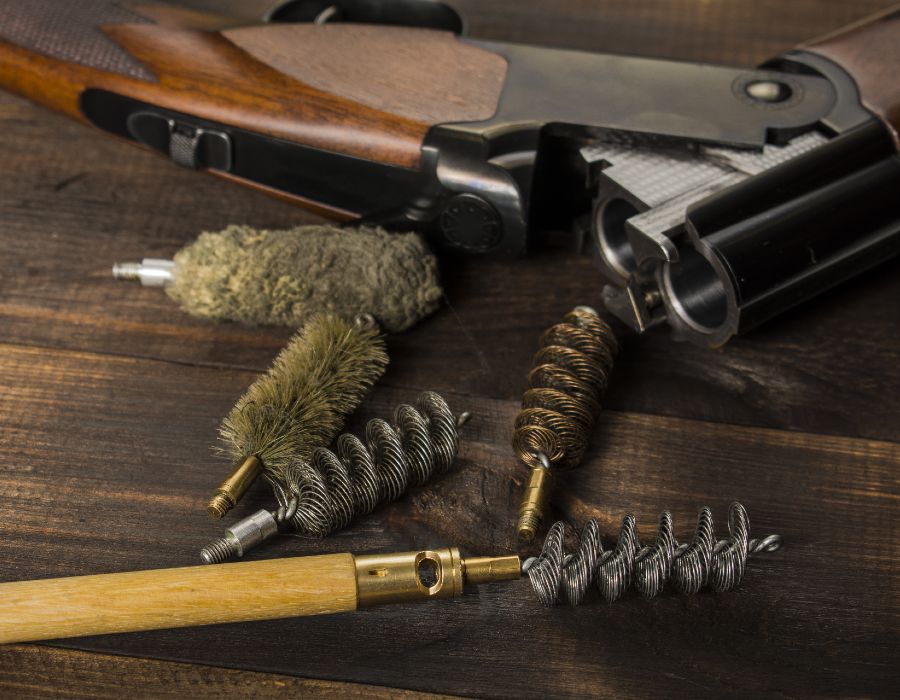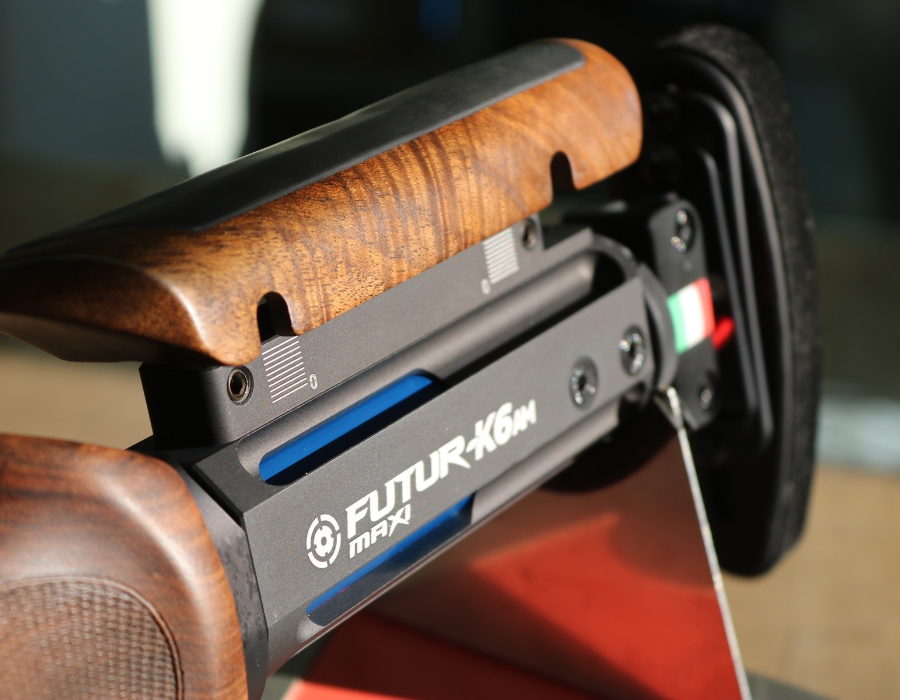At the beginning of the autumn season, the shooting that took place frantically at the shooting ranges in the spring and summer begins to slow down.
The beginning of the “bad” season, even though November is truly considered the end of the good season in many Italian regions, marks the setback of activities that take place outdoors and that need mild weather, like the sport of skeet shooting.
Therefore, we must prepare for a few months of rest from the activity, during which we can take the opportunity to do some small maintenance work on our shotgun, replace some shooting garments, and rethink and review solutions, approaches, and new stratagems for the new season, which is not that far off.
Cleaning a shotgun
Disassembly of a shotgun
Steps and procedures for cleaning a shotgun
Cleaning a shotgun
It is well known that the shotgun, built with materials selected to make it solid and resistant, requires greater care than the hunting one, requiring constant cleaning after each use.
Certainly, we haven’t used mercury fulminate primers for a long time, and their residues, together with the unburned dust and blast fumes, created highly corrosive mixtures for chromium plating and gun barrels.
Nevertheless, at the end of each training session, it is always necessary to clean your shotgun and then carry out an even more thorough cleaning with less difficulty at the end of each season.
This will not only be useful for keeping your shotgun in perfect working order but will also allow you to check whether repairs will be needed on some parts of the shotgun that have worn out during the shooting season.

Disassembly of a shotgun
Let’s start immediately by considering the external parts: trigger, action, closure, shaft (in some of its parts), and barrels, which are all very delicate metal parts, subjected to continuous contact with the shooter’s hands and fingers and with atmospheric agents and factors such as humidity and dust.
These external agents, combined with the acid charge of the hands transmitted through sweating, create a substance capable of interacting with the shotgun’s metal parts, which, if not well cleaned, are subject to oxidation.
Therefore, in break-action shotguns, we will first remove the fore-end that connects the barrels and the action, allowing the rearming of the barrels and the correct harness of the shotgun.
As we all know, it is made of wood, but some parts are made of metal, the external key to release it, the internal mechanism, and the edge that rests on the receiver.
Steps and procedures for cleaning a shotgun
The cleaning intervention will cover both the metal and wooden parts.
-
Brush, degrease, and oil
We will first proceed with dry brushing to eliminate traces of dust.
In this phase, degreasers can also be used to eliminate oil residues. However, concerning the wooden part, you should use a toothpick to avoid damaging the wood or a toothbrush, after the first cleaning to remove dust residues between the grooves.
Then you should use a product to preserve and maintain the material, such as beeswax or better raw linseed oil which tends to darken it.
-
Remove the barrels
After removing the barrels, place them on a slightly inclined surface. One spray of oil should be inserted, which, with the right inclination, will travel the entire length of the barrels.
In the meantime, while the oil softens the lead residues and unburned dust, the external parts can be cleaned.

-
Brush the exterior parts of the shotgun
The heart of the breech, crampons, extractors, surfaces of the barrels and the location of the bolt are the parts that tend to accumulate dirt the most, even in skeet shotguns.
They need vigorous brushing with a broad, dry, stiff bristle brush, while for the more hidden parts, such as the extractor area and the crampons, an old toothbrush could be used.
A good degreaser will remove the dirt that has accumulated, amalgamating with residual oil.
-
Clean the combustion chamber and the barrels internally
Before proceeding with the actual cleaning of the external parts, it is best to focus on the internal part of the barrels, where, in the meantime, the oil will have done its job.
The metal brush, passed several times from chamber to the heart of the muzzle, back and forth, followed by a brush and a wool brush, will allow you to clean the combustion chamber and the barrels thoroughly.
After having carefully inspected them against the light and having checked the cleanliness and integrity of the chrome and barrels, a strip of fabric lightly soaked in oil can be used, which, secured to the cleaning rod, will slide internally.
-
Oil the external parts and the barrels
After removing any residues that have accumulated outside the barrels, we proceed with the oiling of the external parts and the barrels, including the rib.
The parts adjacent to the rib also require some care if the rib is not removable. In both the superimposed and the juxtaposed areas, the interstitial spaces between the rib and the barrels are always the most prone to collecting dirt; therefore, you must always try to keep them clean.
The action part, intended as housing for the barrels, firing pins, latch, safety lever, trigger bridge, and trigger, is very delicate. Being very subject to tensions, it must always be well cleaned and scrupulously examined.
If you have actions decorated with engravings, it is good to use brushes or rigid brushes for cleaning, in any case, non-abrasive tools.
-
Carefully clean even the most hidden parts of the shotgun
As usual, the first brushing phase to remove dust and other dry debris will be followed by the actual cleaning, for which we recommend using even small brushes and toothbrushes to clean even the most difficult to reach parts, like the attachment of crampons, where a lot of dirt lurks.
Daily cleaning can also be done on the surface by spraying oil on the firing pins, or the side of the bolt and safety so that it slides internally to lubricate the parts.
However, when carrying out a thorough cleaning, it is advisable to disassemble the stock to expose the entire trigger system, to degrease and relubricate it carefully.
Naturally, when this type of intervention is done on semi-automatics, it is quite simple to remove the firing pin and bolt. However, with action shotguns, it is a bit more difficult because the action fits perfectly into the wooden base of the stock and, after loosening the rear pin, it could take a little more effort to disassemble and reassemble it, especially if you don’t have an equipped workbench.
The shotguns that mount wooden/aluminum stock systems, on the other hand, are easier to disassemble and reassemble due to the ease of systems and attachments.
Cleaning the shotgun stock

Speaking of stocks, it is good to remember that the shotgun stock also needs a dedicated cleaning. The parts in contact with your face and hands get dirty due to oily skin, and this contact with external agents can create an annoying coat on the wood.
Therefore, you must degrease it and treat it with wood oil, raw linseed oil, or beeswax.
Depending on the environmental conditions in which it is stored, especially if you use products that are not easily absorbed, and environmental humidity, layers of mold could be created. In this case, it is necessary to check this often and intervene to not damage the wood structure.
By mounting Futur K6-AM stocks, as the wooden part is very small, these drawbacks can easily be overcome. In this case, maintenance and cleaning will mainly concern the aluminum part which, due to its intrinsic qualities, is much more resistant to wear and external agents than the other shotgun materials.
To conclude…
In conclusion, if you intend not to use your shotgun for a long time, it is necessary to use products that create a protective film on the metal parts to isolate them from the air, avoiding oxidation.
Good luck!
